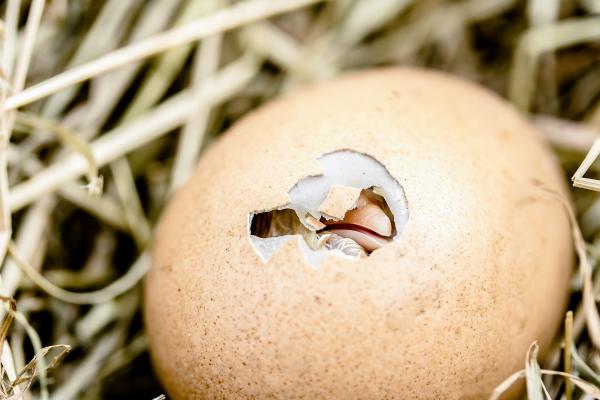Birds, A Boon to Bacteria
Birds, both wild and domestic, are natural carriers of several types of pathogenic bacteria, notably Salmonella. Symptoms of bacterial infection include diarrhea, abdominal cramps, and fever. Severe symptoms can require hospitalization, especially among the young, elderly, pregnant, and persons with compromised immunity. Since  December 2020, the CDC has been monitoring ongoing outbreaks of Salmonella infections that have affected at least 1,135 people in the United States, District of Columbia, and Puerto Rico. Twenty-five percent of reported patients have been children under the age of 5.
December 2020, the CDC has been monitoring ongoing outbreaks of Salmonella infections that have affected at least 1,135 people in the United States, District of Columbia, and Puerto Rico. Twenty-five percent of reported patients have been children under the age of 5.
Commercial Practices Prevent Disease
Commercial poultry and backyard flocks are raised and managed very differently. Commercial chickens are raised in high-density environments where disease can spread quickly, with tragic consequences to the flock and the farmer’s income. They are given vaccines to prevent disease and topical treatments for parasites as day-old chicks. They are housed in cages, so they are not walking in manure; “free-range” bird live in open floor-plan houses which have been rigorously cleaned, sanitized, and filled with fresh bedding.
Chicken farms and their chickens are isolated in several ways
- Unauthorized visitors are prohibited
- Workers regularly sanitize their footwear and wear protective, disposable clothing.
- Screens and other barriers in the poultry house keep wild birds away from the flocks.
- If the birds get sick, they are given antibiotics. Despite many claims to the contrary, they are not given hormones.
Commercial chickens and turkeys have short lives, so they cannot harbor infections long-term. Laying hens generally live a little over a year before they become soup. A broiler or meat chicken grows rapidly, just under 50 days before being sent to slaughter. A commercial tom turkey will reach almost 40 pounds in less than 20 weeks before it graces your table.
Backyard birds
On the other hand, backyard hobbyists treat their birds like pets instead of livestock. These hobby hens die of ‘old age.’ Poultry lovers need to be aware that, just like pet dogs and cats, birds need vaccinations, occasional medications, and parasite treatments to live long, healthy, and productive lives. Most importantly, poultry owners need to regularly clean and sanitize poultry houses, outdoor runs, and equipment. Chicken manure and wet bedding attract flies, and the smell attracts varmints. Birds can develop foot and respiratory problems; these conditions allow infectious pathogens to flourish and be transmitted to their human caretakers.
For commercial egg and breeding operations, it is cheaper to replace birds than to take them to a veterinarian.  For this reason, there are not many vets who treat or specialize in backyard poultry. If you can’t bear to part with a geriatric bird, here is a listing of chicken veterinarians in the United States. Remember: old hens can be replaced by vigorous, young pullets who will lay more eggs, and a sick hen could infect you, your children, and the entire flock.
For this reason, there are not many vets who treat or specialize in backyard poultry. If you can’t bear to part with a geriatric bird, here is a listing of chicken veterinarians in the United States. Remember: old hens can be replaced by vigorous, young pullets who will lay more eggs, and a sick hen could infect you, your children, and the entire flock.
Human infections caused by birds will continue unless hobbyists understand and practice safe handling practices. If you are a backyard poultry flock owner, here are some precautions you can take to prevent infecting yourself or your family members. These suggestions are taken directly from the CDC website, “Salmonella outbreaks linked to backyard poultry,” which I highly recommend you read.
- Wash your hands
- Always wash your hands with soap and water immediately after touching backyard poultry, their eggs, or anything in the area where they live and roam.
- If soap and water are not readily available, use hand sanitizer.
- Be safe around backyard flocks
- Don’t kiss or snuggle backyard poultry or eat or drink around them. This can spread Salmonella germs to your mouth.
- Keep your backyard flock and supplies you use to care for them (like feed containers and shoes you wear in the coop) outside your home. You should also clean the supplies outside the house.
- Always supervise children around backyard poultry and make sure they wash their hands properly afterward.
- Don’t let children younger than five touch chicks, ducklings, or other backyard poultry. Young children are more likely to get sick from germs like Salmonella.
- Educate children about hand sanitation and disease transmission from birds and feces.
- Handle eggs safely
- Collect eggs often. Eggs that sit in the nest can become dirty or break.
- Throw away cracked eggs. Germs on the shell can more easily enter the egg through a cracked shell.
- Washing eggs in cold water can pull germs into the egg; rub off dirt on eggs with fine sandpaper, a brush, or a cloth.
- Refrigerate eggs to keep them fresh and slow the growth of germs.
- Cook eggs until both the yolk and white are firm, and cook egg dishes to an internal temperature of 160°F to kill all germs.
Why do my chickens fight so much?
They have a social hierarchy, a ‘pecking order’ established by assertiveness and dominance. The weaker birds get bullied by the meaner ones. The hobbyist can reduce conflicts and injury by not overcrowding the coop or yard. Supply feed and water in more than one place to ensure the weaker birds have access. Think about your dinner table; you wouldn’t expect ten people to eat around a table that only seats six. Penn State Extension recommends 3 inches of feeder space per laying hen.
You don’t need a rooster for hens to lay eggs.
A rooster is detrimental to most flocks because they crow incessantly, will attack children and pets, and constantly harass the hens. Many urban areas which allow chickens do not allow roosters or limit their number. If you want fertile eggs to propagate your flock, then, yes, you need only one rooster per ten to fifteen hens.
Why do my hens stop laying in the fall?
Hens’ reproductive organs are ‘turned on’ by increasing light. As light lengthens in the spring, their oviducts start pumping out eggs. In the fall, with decreasing light, they slow down and eventually stop laying. Commercial producers optimize egg production by using an artificial lighting regime so that their hens actively lay eggs all year round, not just in the spring, summer, and early fall. If you want your hens to lay year-round, you too will have to provide 14 to 16 hours of artificial light per day.
Thinking of your own backyard chickens? You can find additional and reliable avian advice from your state university’s agriculture extension websites. Penn State Extension offers an online course. Good luck and keep on clucking!




